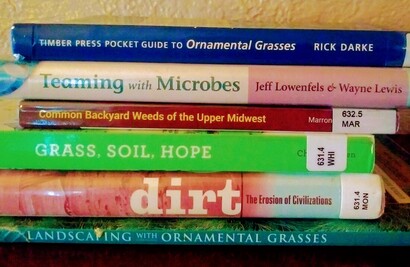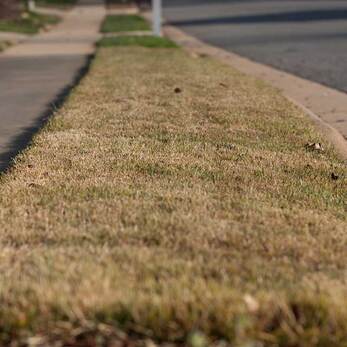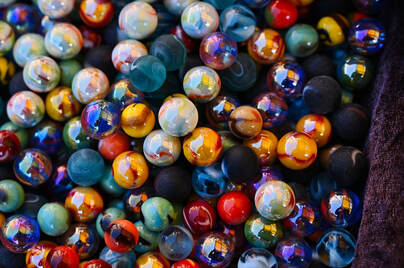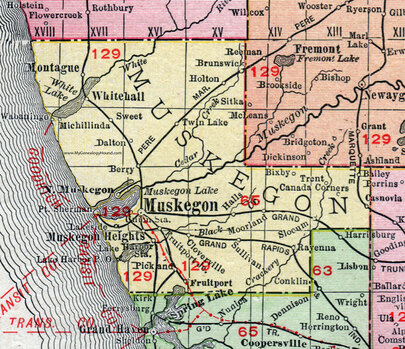 Rhizoctonia solani Rhizoctonia solani A recently-released study from an international group of scientists and researchers (link to PDF) shows that vermicompost (compost produced by worms) not only improves crop productivity, but actively fights fungal attacks that can destroy harvests. This is great news, not only for organic farmers, but also home gardeners who are looking to boost their harvest and prevent fungal outbreaks without using harmful synthetic fungicides and fertilizers. Their scientific conclusion: "The application of vermicomposting to agricultural land increases productivity by a multifaceted impact on soil health and crops, facilitating nutrient enrichment and preventing pathogen development. Vermicompost and its derivatives, such as vermiwash [liquid extract produced from earthworm-rich vermicompost], along with associated decomposer bacteria, act against fungal pathogens. The antifungal efficacy of vermicompost may be associated with bioactive compounds present in the CF [coelomic fluid], mucus, skin secretion of earthworms and metabolites secreted by decomposer bacteria. The CF of earthworms has an inherent ability to defend worms against diseases. It inhibits the growth of a variety of fungal pathogens, such as Rhizoctonia solani, Alternaria solani, Aspergillus niger, A. flavus, Fusarium oxysporum, and F. graminearum. The metabolites from vermicomposting bacteria, CF, mucus, and skin secretion synergistically combat phytopathogenic fungi. As an organic product, vermicompost and its derivatives are environmentally friendly. Thus, these products should be used to boost agricultural productivity by nutrient enrichment and reduction of plant fungal diseases." The layperson's summary: Worms which break down organic matter have to be able to fight off harmful bacterial and fungal pathogens in the soil, so they secrete fluids from their bodies to do this. These fluids are also present in the vermicompost (their poop) that we apply to the soil in our pots and gardens. Therefore the study shows that because of the composting worms' fluids present in the vermicompost, their vermicompost also acts as an antifungal agent for your plants. To order Living Worm Compost for your garden and potted plants, click here.
0 Comments
 The off-season (November-March) at the Good Sweet Earth homestead is the time of year we like to recharge our batteries and expand our knowledge base. That means a little travel, a little rest, but also a lot of continuing education, research, workshops and reading. Steve (our lawn guy), has decided to focus on two areas of study this year: Learning as much as he can about common lawn weeds found in Michigan, and the physiology of ornamental grasses. That means, in addition to the usual reading about faming, soils, microbes, turf and vermicompost, he’ll be entering the 2020 growing season (hopefully!) with a whole new level of understanding of ornamental grasses and weeds, and how those relate to a healthier, more beautiful yard. So while some of our outside learning comes in the form of classes, much of it comes from good old-fashioned trips to the public library, and browsing the shelves for good books to fill the cold winter months. We thought we’d share with you some of what we’re reading this January, and how it’s informing and inspiring us as we enter a new year.
 Spring is past, and we’ve now transitioned into the hotter, dryer days of summer. That means fresh tomatoes, berries, peppers, roses...and brown grass. Yep. It’s nature, people. For those of us living in West Michigan (actually, everyone north of Kentucky), we have what’s called “cool weather turf.” That means once the temps regularly hit the 80s, the grass goes to sleep-- just like it does in winter. It’s not dead-- let me reiterate that point: Brown grass isn't necessarily dead grass. It’s just resting and building up energy for the next growing season, which happens to be autumn. Cool weather turf greens up and grows when temps range between 60 and 75. That’s the sweet spot you have in the spring and fall, and that’s why you’re constantly mowing in May, June, late September and early October. So what’s an ecologically-friendly homeowner to do during these crispy summer months? The most-environmentally-friendly answer is: Nothing. Let it sleep. Grass can go about 10-14 days (depending on how high the temps go) without water before it actually dies. Once you get into the third week without any water on your lawn, give it a good, deep watering early in the morning. A good way to tell the difference between dead and dormant grass? Give it a good tug. If it comes out easily, it's dead and it ain't coming back. If it stays put, it's just dormant and doing exactly what God intended in the summer. If you don’t want it to go too dormant (and get too brown) you can give it a good deep watering whenever it gets too brown for your own comfort level. Maybe you want your grass to stay as green as possible. That means you could be watering every third day. Maybe you just want to keep it from going dormant; that might mean you water once a week. Whatever you decide, the key is to water deeply-- 30-60 minutes whenever you turn the sprinklers on. Deeper waterings mean the turf's roots grow deeper into the ground. And that means your grass will be able to find water deeper in the soil. But here’s a little secret: When you treat your lawn organically, your turf won’t get as crispy as a lawn treated with synthetic chemicals during dormancy. Why? The soil is healthier and can tolerate heat and drought better. It can hold on to water better. Plus, those longer waterings mean your turf’s roots have grown deep into the ground and are better able to find water, even when it doesn’t rain. Bottom line. Your grass is supposed to go dormant, and turn brown, twice a year: winter and summer. During those times, it’s building up carbohydrates for the next growing season. However, to keep it from going too dormant, give it a deep watering on occasion, or whenever you want to see a little more green color on your lawn. Avoid short, daily waterings. Regardless of how much you water, it's just natural for your grass to have some brown in it in the summer. So relax, and enjoy the season! It'll be fall before you know it, and your grass will be green again.  This is a Q&A blog series on healthy organic turf. If you have a question for Good Sweet Earth's lawn guy, Steve, shoot him an email at steve@GoodSweetEarth.com, and include "Ask the Lawn Guy" in the subject line. Most people know what sandy soil and clay soil look like. They know that sandy soil is pretty loose and doesn't hold water very well. They know that clay soil can often feel hard and compacted. Most people also also know that nothing grows especially well in soil that's either of these two things. Somewhere in between sand particles and clay particles lies silt. Loam soil contains a balance of all three types of particles. So the question that I got recently was this: "How much sand should I add to my clay soil to loosen it up and make it usable?" And I suppose the counterpart to this question could be "How much clay should I add to sandy soil?" In short, the answer is: Don't bother. You'll make your soil even worse by trying to change its structure with sand or clay. Imagine your clay particles as marbles. Proportionally speaking, silt would be about the size of a basketball compared to those marbles. Now I had a hard time coming up with a real-world object that would be representative of a sand particle next to our marble-sized clay particle. The best I could come up with is this: Picture a ball slightly larger than a three-car garage. Yep. That's a sand particle next to a clay particle. Now imagine you had a field full of marbles. And you want to "loosen" things up. I don't care how many three-car garages you add to that field of marbles, you're never, ever going to end up with a field full of basketballs. You're just gonna have a bunch of really small balls and really large balls, and they're not going to work together for anyone's good because you're never going to have enough garage-balls to balance the little marbles. Ideally, healthy soil is equal parts marbles, basketballs and three-car garages. But getting that balance is so much harder than it sounds. I don't recommend attempting to change the mineral structure of your soil this way. So what is a clay-burdened or sand-burdened gardener to do? Two words: Organic matter. Clay-heavy soil has a very difficult time getting air through its tiny, tightly-bound particles. Roots also have a hard time moving through them. Organic matter, like compost or organic fertilizers, changes everything. This is the answer you seek, not sand. Mix that organic matter into your clay soil or top-dress it. Adding organic matter will make your clay soil usable in a way that adding sand never will. Likewise, if you're dealing with sandy soil (an especially common problem if you live by the Lake Michigan lakeshore), adding organic matter will help your soil retain water and nutrients so much better. Types of organic matter that you can add to your soil to make it healthier include basic compost (that many gardeners make in their own backyards), Worm Compost or Alfalfa Meal. Biochar (mixed with some sort of composted material) also makes for a terrific soil amendment. For really compacted clay soil, gypsum is a good, natural option for de-compacting it before adding organic matter. For compacted lawns with clay soil, aeration is a good option, best done in the fall, followed by a top-dressing of organic matter and/or gypsum.  Good news, Muskegon County residents! Good Sweet Earth isn't just serving the counties of Kent, Allegan and Ottawa anymore. Starting in 2019, we're expanding our service area north along the lakeshore to cities and townships in Muskegon County. If you live in Muskegon, Norton Shores, Whitehall, Roosevelt Park, Casnovia, Fruitport, Montague, Ravenna, or any neighboring community, and you'd like to feed your turf and soil organically, we'd love to come out and give you a free consultation for lawn care. But why go organic on your lawn? First, healthy grass comes from healthy soil. Synthetic chemical fertilizers kill your soil, which in turn kills your turf and makes it overly reliant on chemicals. Dead soil is also a breeding ground for weeds and disease. Organic fertilization focuses on feeding your soil and developing a healthy ecosystem of bacteria, fungi, worms and other life below the surface of your yard. We use vermicompost (nutrient-rich compost made by earthworms), microbial tea (a liquid rich in microbes to help break down organic matter in your soil), and all-natural slow-release fertilizers. Second, many people in the United States have made the switch to buying organic produce, yet continue to dump chemicals on their lawn and garden. There's a real disconnect there. If you're concerned with how your food is grown on a farm, you should be even more concerned with how your grass (and garden) are grown in your own yard. Third, synthetic chemicals are destroying our ecosystem. These chemicals leach into our watersheds, they kill the life found in our lakes, rivers and streams, they cause algae blooms, and ultimately introduce poisons into our environment. Organic soil management practices can reduce the effects of climate change by helping soil hold on to carbon more effectively. This type of healthy soil management doesn't have to be limited to farms, it needs to start right in each of our yards. In fact, lawns cover more acreage in the United States than any other crop. That means the management practices adopted by homeowners could have a larger impact on our nation's soil and climate than the actions of our farmers. If you live in Kent, Ottawa, Allegan or Muskegon Counties in West Michigan, and you'd like to learn more about organic lawn care for your own home, give us a call at 616-594-0693 or email us at office@GoodSweetEarth.com. |
